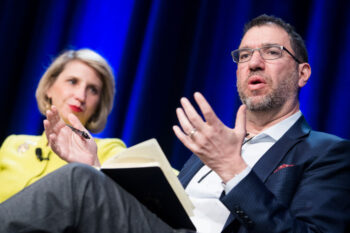
SLAVITT: Well, predictability will be a good thing. But I wonder if it'll also discourage people from taking precautions, like masks and vaccinations. But there are a number of scientists who say that the number of times we'll see a major shift could be pretty rare, could be as infrequently as once a decade.įLORIDO: As you said, the predictability that comes from the endemic phase will help us figure out what kind of public health measures to use. So the big question is, are we going to be in drift mode and for how long will we be in drive mode, or are we going to go back to shift mode where we'll see a delta, an omicron, etc.? No one knows the answer. And our vaccines will, generally speaking, be more aligned to what we see next than they would be if we were to see a shift. And what's better about a drift is that our body is, generally speaking, forming better immunity in prior versions that protect us against newer versions. A shift is where we would get an entirely new Greek letter, in this case with completely different mutations and characteristics. And a drift is a better scenario than a shift. And what they mean by that is a drift virus would indicate that we will just continue to see more progressions, almost laddering up of new omicron - we have 1.1, 1.2, 1.3, 1.4. SLAVITT: So scientists talk about this notion of drift versus shift.
#Andy slavitt dating apps update
So what we really want to know is, is it going to get any more severe? And is it going to get any more frequent? And are the vaccines and tools we have going to continue to work? And if we are in a situation where we need to update our vaccines once or twice a year, we need to be prepared to do that.įLORIDO: What are the unknowns out there that could change your assessment about how close we're getting to an endemic phase of this disease? It will still be dangerous and still dangerous for people who are frail, people who are immunocompromised, but even in those situations, the tools are better and better. And while none of them are perfect on their own, when you combine them with what our own immune system does and the continued kind of improvement of these tools, the layered immunity we have, COVID should become less and less fatal. SLAVITT: I think the real question is, what are the tools that we need to have as a country in order to live as normal life as possible? The best news of all is that we have incredible scientific tools - vaccines, boosters, oral therapeutics. And what we don't know but we may be witnessing are some clues as to what a predictable pattern will look like when we settle into one.įLORIDO: Why is it so important for us to know that we're in an endemic phase, assuming we get there at some point? It just means it's following a predictable pattern.

Endemic doesn't necessarily mean people are no longer losing their lives.

Endemic doesn't necessarily mean everybody's safe. SLAVITT: Well, yeah, let's be clear - we don't know if we're in an endemic phase yet, and we probably won't know till afterwards because I think the best definition of endemic that I've heard is just when the surprises are gone, and it becomes predictable. But before I ask why you think that, remind us what the endemic phase of a disease is and how that is different from the pandemic phase. Andy Slavitt, welcome back to ALL THINGS CONSIDERED.ĪNDY SLAVITT: It's great to be here, Adrian.įLORIDO: You said in a thread on Twitter that we're getting clues about what COVID will look like when it's an endemic disease.

Slavitt was a senior adviser to President Biden on COVID and was the head of Medicare and Medicaid in the Obama administration. Well, Andy Slavitt thinks that this new wave of growth is giving us a glimpse into what endemic COVID will look like once we get there. Much of that increase is being driven by variants of omicron. And that's because in many parts of the country, COVID-19 case numbers are going up and up. Does it feel like everyone you know has COVID right now? For a lot of people, the answer is yes.


 0 kommentar(er)
0 kommentar(er)
